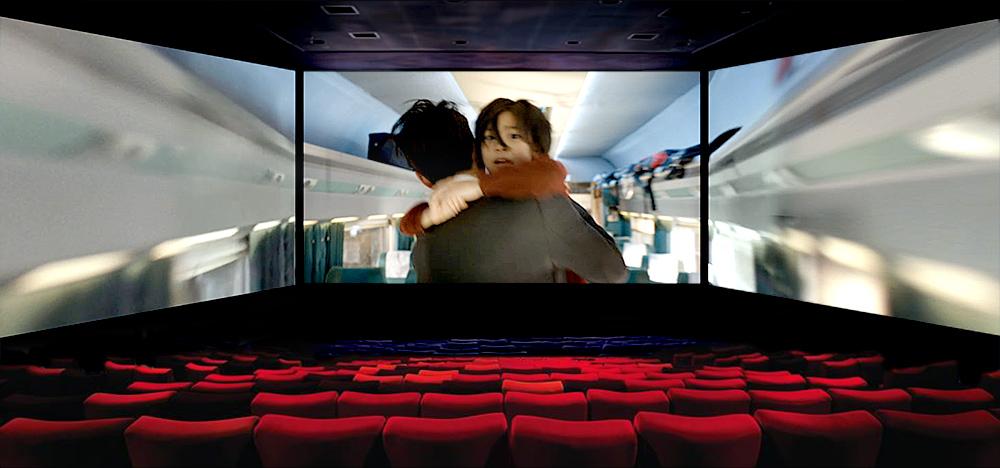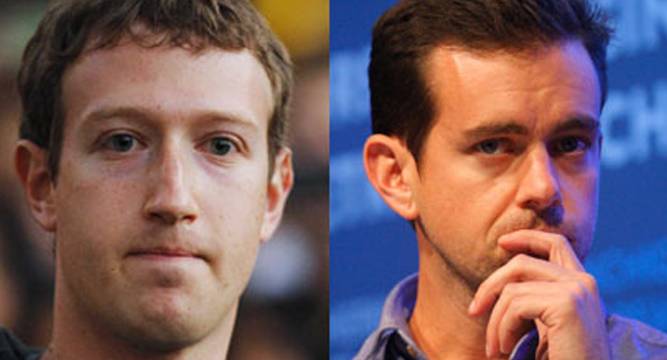
Even though ScreenX has been around since 2012, theaters in London and the United States are finally implementing them. They are claiming that it’s part of their fight to get people back as home theaters have become better than many theaters.
At our main Movie TV Tech Geeks office, we’ve been using this for movie reviews along with our relaxation room. No, we don’t have the ScreenX, but we’ve added enormous screens that cover three of the room’s walls to give us a completely 270-degree immersive experience. I do believe that my stress levels have dropped due to a daily 20 minute stop in the relaxation room with a video showing the waves washing up on a mountainside retreat. With the sounds and video surrounding you, any tension washes away with each wave like no sound machine could come close to.

I am (but not really) surprised that it’s taken theaters this long to try this. It’s expensive, but so much of the time the team here will comment on how bad theater screens (all over America) are when compared to what we have in our office. With prices dropping on large 4K televisions, it’s no wonder why most people would rather sit at home watching a film rather than on an inferior screen.
Sit at the back of the movie theater, and it’s possible to see the appeal of ScreenX, the latest attempt to drag film lovers off the sofa and away from Netflix.
Instead of one screen, there are three – one at the front, and two on the sides – to add to the immersive experience you can’t get from the home TV.
First adopted in South Korea in 2012, the system is being launched in the U.K. and theater chain Cineworld plans to add over 100 new screens to the worldwide count of 151.
The technology is the latest attempt by cinema operators to attract film viewers amid the growing popularity of online subscription services like Netflix and Amazon Prime. They’ve ranged from 3D screens launched almost a decade ago to ultra-high resolution IMAX projectors and 4DX – which features moving chairs and real-life special effects like snow falling on the audience.
The focus on innovation has helped in the past. Since 3D was popularized at big cinema theaters in 2009 with the release of films like James Cameron’s “Avatar,” revenue has grown. Global box office revenue has increased by $14.4 billion in the past decade to $40.6 billion, according to Motion Picture Association of America.
But that growth seems to be fading, and movie theaters are being overtaken by internet video. Revenue from internet video like Netflix is forecast to be the fastest growing part of the entertainment and media industry through 2021, according to consultancy PwC. Its estimated annual growth of 6 percent compares with a projected annual drop in cinema of 1.2 percent.
It’s unclear whether this latest innovation will help or stand out.
Cineworld says the idea is “it makes you feel like you’re sitting in the action.”
Robert Mitchell, a film journalist for Variety magazine, notes that was the point of 3D in the first place.
“In 2009, when films like ‘Ice Age’ and ‘Avatar’ were coming out, it was the great new thing,” he says. “That lasted for a couple of years until people started to realize that some films were being made that didn’t really use the enhancements well. And it started to put people off going.”
Love it or hate it, the number of cinemas that offer these new types of experiences grows globally every year.
“We’re really confident that by offering customers as much choice as possible that it’s going to bring people into the cinemas,” says Kelly Drew, an operations director at Cineworld.
Regal will be installing 100 theaters will ScreenX with the first one opening on Friday at the Irvine Spectrum Center.
Who knew connecting the world could get so complicated? Perhaps some of technology’s brightest minds should have seen that coming.
Social media bans of conspiracy theorist Alex Jones have thrust Facebook, YouTube, Twitter and others into a role they never wanted — as gatekeepers of discourse on their platforms, deciding what should and shouldn’t be allowed and often angering almost everyone in the process. Jones, a right-wing provocateur, suddenly found himself banned from most major social platforms this week, after years in which he was free to use them to promulgate a variety of false claims.
Twitter, which one of its executives once called the “free speech wing of the free speech party,” remains a lonely holdout on Jones. The resulting backlash suggests that no matter what the tech companies do, “there is no way they can please everyone,” as Scott Shackelford, a business law and ethics professor at Indiana University, observed.
Facebook’s Mark Zuckerberg, Twitter’s Jack Dorsey and crew, and Google’s stewards of YouTube gave little thought to such consequences as they built their empires with lofty goals to connect the world and democratize discourse. At the time, they were the rebels aiming to bypass the stodgy old gatekeepers — newspaper editors, television programmers and other establishment types — and let people talk directly to one another.
“If you go back a decade or so, the whole idea of speech on social media was seen as highly positive light,” said Tim Cigelske, who teaches social media at Marquette University in Wisconsin. There was the Arab Spring. There were stories of gay, lesbian and transgender teens from small towns finding support online.
At the same time, of course, the companies were racing to build the largest audiences possible, slice and dice their user data and make big profits by turning that information into lucrative targeted advertisements.
The dark side of untrammeled discourse, the thinking went, would sort itself out as online communities moderated themselves, aided by fast-evolving computer algorithms and, eventually, artificial intelligence.
“They scaled, they built, they wanted to drive revenue as well as user base,” said technology analyst Tim Bajarin, president of consultancy Creative Strategies. “That was priority one and controlling content was priority two. It should have been the other way around.”
That all got dicier once the election of President Donald Trump focused new attention on fake news and organized misinformation campaigns — not to mention the fact that some of the people grabbing these new social-media megaphones were wild conspiracy theorists who falsely call mass shootings hoaxes, white nationalists who organize violent rallies and men who threaten women with rape and murder.
While the platforms may not have anticipated the influx of hate speech and meddling from foreign powers like Russia, North Korea and China, Bajarin said, they should have acted more quickly once they found it. “The fact is we’re dealing with a brave new world that they’ve allowed to happen, and they need to take more control to keep it from spreading,” he said.
That’s easier said than done, of course. But it’s particularly difficult for huge tech companies to balance public goods such free speech with the need to protect their users from harassment, abuse, fake news and manipulation. Especially given that their business models require them to alienate as few of their users as possible, lest they put the flood of advertising money at risk.
“Trying to piece together a framework for speech that works for everyone — and making sure we effectively enforce that framework — is challenging,” wrote Richard Allan, Facebook’s vice president of policy, in a blog post Thursday. “Every policy we have is grounded in three core principles: giving people a voice, keeping people safe, and treating people equitably. The frustrations we hear about our policies — outside and internally as well — come from the inevitable tension between these three principles.”
Such tensions force some of the largest corporations in the world to decide, for instance, if banning Nazis also means banning white nationalists — and to figure out how to tell them apart if not. Or whether kicking off Jones means they need to ban all purveyors of false conspiracy theories. Or whether racist comments should be allowed if they are posted, to make a point, by the people who received them.
“I don’t think the platforms in their heart of hearts would like to keep Alex Jones on,” said Nathaniel Persily, a professor at Stanford Law School. “But it’s difficult to come up with a principle to say why Alex Jones and not others would be removed.”
While most companies have policies against “hate speech,” defining what constitutes hate speech can be difficult, he added. Even governments have trouble with it. One country’s free speech is another country’s hate speech, punishable by jail time.
Facebook, Twitter, Google, Reddit and others face these questions millions of times a day, as human moderators and algorithms decide which posts, which people, which photos or videos to allow, to kick off or simply make less visible and harder to find. If they allow too much harmful content, they risk losing users and advertisers. If they go too far and remove too much, they face charges of censorship and ideological bias.
“My sense is that they are throwing everything at the wall and seeing what sticks,” Persily said. “It’s a whack-a-mole problem. It’s not the same threats that are continuing, and they have to be nimble enough to deal with new problems.”


